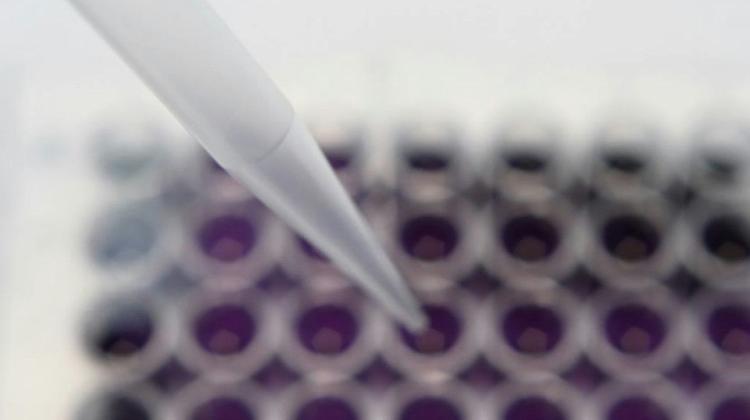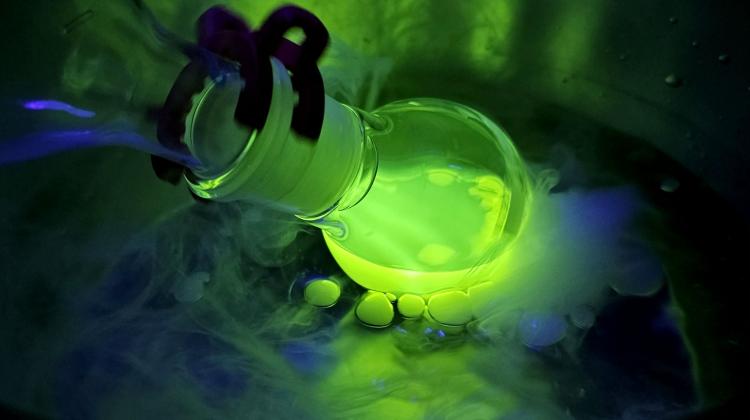The invention of Kraków scientists can help transplantology

Researchers at the Cracow University of Technology have developed a biodegradable chitosan aerogels, which are used for growing various tissues, including human tissue, and can be used in transplantology, among other things. "Our aerogels have unique properties unattainable by other such materials on the market" - said Dr. Marek Piątkowski.
To grow tissue, and in a longer perspective a human organ or its fragment, the cell data need to be combined with special substrates, so-called scaffolds.
Developed aerogels (the material is kind of rigid foam with extremely low density) are such scaffolds. The invention will not only allow to culture cells, but also implant the aerogel scaffold with new cells into the patient.
Aerogels - according to scientists from Cracow University of Technology - can be used in medicine, especially in transplantology. Tissue engineering is an alternative to conventional transplants. The cells grown on aerogel substrate can also support the action of anticancer drugs.
"Our aerogels have unique properties unattainable by other such materials on the market" - said the head of the research team, Dr. Marek Piątkowski.
Member of the research team, Julia Radwan-Pragłowska explained that chitosan aerogels are biodegradable - after living tissue has grown, the scaffold breaks down into non-toxic substances, and these are naturally removed from the body. Substrates (mainly synthetic) currently used in tissue culture do not have these biodegradable properties.
Aerogels are also biocompatible. "Biocompatibility means that the cells are not rejected by the body" - said Radwan-Pragłowska. The aerogels obtained by scientists are antibacterial, they do not cause bleeding or inflammation, allergies or antioxidant stress.
Radwan-Pragłowska noted that the invention owes these properties to its natural origin - it is obtained from chitin derivatives: exoskeletons of crabs, prawns, lobsters (waste biomass). Manufacturing technology of aerogels is consistent with the principles of Green Chemistry and Sustainable Development, it is environmentally friendly.
Piątkowski explained that synthetic polymers (especially polyesters), and biopolymers, such as proteins (e.g. collagen, fibrin), and polysaccharides (e.g. hyaluronic acid) are currently used for the production of scaffolds. Also used are ceramics (mainly on the basis of hydroxyapatite, which is the basic component of bone), and composites (e.g. polylactide, hyaluronic acid). These materials do not have as many advantages, as aerogels.
Aerogels are highly porous materials with very low density. "The materials used as scaffolds for cell culture must allow them access, among other things, to nutrients and oxygen, and remove waste products and carbon dioxide. Additionally, to achieve a multilayer tissue, the cells must be able to move and form a three-dimensional structure. All this is enabled by the presence of many pores in the aerogel" - explained the team leader.
He added that the aerogel production method is very cheap. The cost of producing aerogel to grow, for example, a fragment of skin (20 cubic cm) is approx 2 zlotys. For comparison, the cost of other substrates is approx. 1 thousand euros per 20 cubic cm.
Soon the invention of scientists from Kraków will be tested - including test cultures of selected cells (skin cells, glial cells, cells of the nervous system), obtained from cell banks. For commercial use of the invention within the organism, it is also necessary to carry out tests not only in environments simulating a living organism, but also within the body - first on animals.
The invention of scientists from the Faculty of Chemical Engineering and Technology, Cracow University of Technology was awarded a gold medal at the international exhibition of inventions in Brussels - Brussels Innova 2016, and won first prize in the eleventh edition of the Young Inventor competition.
Scientists assume that the results of the project will be of interest to research centres, transplantation centres, plastic surgery and aesthetic medicine centres.
PAP - Science and Scholarship in Poland
bko/ luo/ hgt/ mrt/
tr. RL
Przed dodaniem komentarza prosimy o zapoznanie z Regulaminem forum serwisu Nauka w Polsce.


















